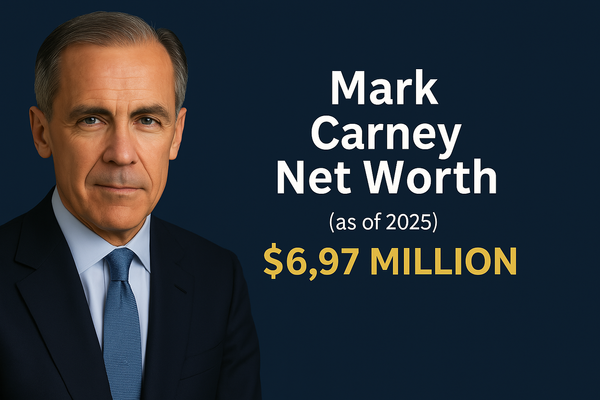Pierre Poilievre's Campaign Promises: What Voters Need to Know in 2025
Pierre Poilievre's campaign promises have become crucial as recent polls show Conservatives and Liberals deadlocked before the April 2025 federal election. The 45-year-old Conservative leader started his political experience at 23 as a member of Parliament. He now presents himself as the catalyst for change after what he describes as a "lost Liberal decade."
Poilievre's "Canada First, For a Change" platform emphasizes economic revival. He promises to eliminate the carbon tax and expand resource projects to generate employment. The political scene remains unpredictable. The Conservatives' substantial poll lead has vanished over recent months. The stakes are high with U.S. tariff threats and middle-class tax concerns that affect up to 22 million Canadians. This combination of factors makes the upcoming election one of Canada's most significant in recent memory.
Pierre Poilievre's Economic Promises: Tax Cuts and Fiscal Policy
Pierre Poilievre's economic vision centers on a bold promise. He wants to cut taxes and control government spending. His approach tackles rising living costs and helps Canadian businesses compete better in the global market.
Personal income tax reductions for all Canadians
Poilievre has promised a big cut to the lowest income tax bracket. He plans to lower it from 15% to 12.75%. This 15% tax reduction will help every Canadian who pays income taxes. Conservative estimates show the average worker would save about CAD 1,254.02 each year. Families with two incomes could save up to CAD 2,508.05 per year. The tax cut will roll out slowly until 2027-28. At that point, it will cost the federal treasury about CAD 19.51 billion yearly. Poilievre points out that everyone benefits, but "modest-income people will pay less in relative terms and as a share of their overall income".
Plans to eliminate the carbon tax permanently
His opponents announced a temporary carbon tax pause. But Poilievre promises to "ax the entire carbon tax law" for good. This covers both the consumer carbon tax and federal industrial carbon tax backstop. Provinces can handle emissions their own way, without federal rules. Rather than taxes, Poilievre supports a "technology, not taxes" approach. He would expand Clean Technology and Clean Manufacturing Investment Tax Credits. These credits would reward industries that produce goods with lower-than-average global emissions.
Proposed changes to federal spending
Poilievre will cut spending to pay for his tax cuts. He targets what he calls "wasteful" spending in bureaucracy, consultants, corporate welfare, and foreign aid. His specific targets include the housing infrastructure fund, housing accelerator fund, CBC funding, and Canadian Infrastructure Bank. On top of that, he wants a "dollar-for-dollar law." Ministers must find one dollar in savings for every new dollar they spend. The federal public service would shrink too.
Economic strategy to counter U.S. tariffs
Poilievre has a multi-step plan to handle American tariff threats:
- Target American goods with counter-tariffs strategically: starting with goods Canada can make, then unnecessary items, and finally goods we can get elsewhere
- Use almost all counter-tariff money for tax cuts instead of new government spending
- Keep a small amount to help workers most affected by the trade war
- Create a "bring it home tax cut" on work, investment, energy, and home building to balance tariff costs
He also supports stronger internal Canadian trade to rely less on the American market.
Housing Affordability: Poilievre's Plan to Address the Crisis
Housing is the life-blood of Poilievre's campaign promises. The Conservative leader describes Canada's current situation as "housing hell" after prices doubled since 2015. Home prices have skyrocketed from CAD 631,192.17 in October 2015 to CAD 971,172.06 by June 2024. This dramatic increase makes affordability a crucial election issue.
Promised reforms to increase housing supply
Poilievre's "Building Homes Not Bureaucracy Act" takes a mathematical approach to housing. We targeted municipalities to increase housing completions by 15% annually. Cities that fail to meet these targets would see federal funding clawbacks matching their shortfall. Cities that build more homes would receive "building bonuses" - CAD 13,933.60 for each additional home.
The plan has a controversial "NIMBY penalty" that would hold back infrastructure dollars from cities that block housing because of resident opposition. Poilievre wants to sell 15% of the federal government's 37,000 buildings and convert them into affordable housing.
Approach to mortgage regulations and first-time buyers
The biggest change would remove the GST on new homes sold up to CAD 1.81 million. Homebuyers would save up to CAD 90,568.41 on purchase price and about CAD 4,180.08 in annual mortgage payments.
This tax cut would boost construction of 36,000 additional homes each year, according to Poilievre's estimates. This would generate CAD 3.51 billion in income taxes from construction workers and businesses.
Rental market proposals
Poilievre promises to remove GST on construction of new rental homes priced below market value. He plans to fund this by cutting what he calls "bureaucratic" Liberal programs, including the CAD 5.57 billion Housing Accelerator Fund.
Housing experts don't agree on whether the plan will work. Many support Poilievre's emphasis on municipal supply constraints. In spite of that, some experts doubt whether increased construction alone can fix the crisis. Professor Sasha Tsenkova believes the idea that "we can build our way out of the housing crisis" isn't realistic.
Immigration and Border Security Policies
Border security stands out as one of the most important priorities in Pierre Poilievre's campaign promises. The Conservative leader believes the current system has gotten out of control. His immigration policies show a transformation in approach that balances economic needs with what our infrastructure can handle.
Proposed changes to immigration targets
Poilievre wants to cap the number of asylum seekers because of what he calls a huge wave of refugee claims. Nearly 250,000 claims wait in queue as of September 2024. He suggests linking immigration levels to housing construction. "We just need to make a link between the number of homes built and the number of people we invite as new Canadians".
His stance marks a clear break from current policies. He plans to slow down population growth if elected. The annual immigration intake would drop to about 250,000, similar to what Stephen Harper's administration managed to keep.
Border enforcement measures
Poilievre's border strategy centers on his six-point plan to "take back control of the border":
- Deploy Canadian Forces troops and military helicopters for immediate border surveillance
- Add at least 2,000 new border agents
- Extend Canada Border Services Agency powers along the entire border, not just at crossings
- Install border surveillance towers and truck-mounted drone systems
- Implement high-powered scanners at major land crossings and ports to detect drugs, guns, and stolen vehicles
- Track departures to monitor deportees remaining illegally
These measures would help curb fentanyl trafficking, gun smuggling, and terrorism. Currently, "only 1% of shipping containers are inspected".
Skilled worker prioritization strategy
Merit-based system forms the core of Poilievre's immigration vision. It gives priority to people with in-demand skills. He promises faster approvals for skilled workers, family reunifications, and international students by cutting red tape.
He supports reforms for temporary foreign workers that ensure better working conditions, fair wages, and paths to permanent residency. His strategy creates targeted immigration streams that fill critical labor gaps in healthcare, technology, and construction sectors.
Healthcare and Social Program Commitments
Healthcare reform stands at the heart of Poilievre's platform. His focus centers on mental health challenges and the shortage of healthcare professionals that affect Canadians across the country.
Mental health initiatives
Poilievre takes a firm position on mental health treatment, especially when it comes to mandatory psychiatric and substance abuse care for certain groups. He supports involuntary treatment for children and prisoners who "can't make decisions for themselves". His stance became clear after hearing from parents whose 13-year-old daughter died from an overdose in a homeless encampment. "There's no question in my mind that she should have been in mandatory, involuntary psychiatric and substance abuse treatment, rather than in a homeless encampment in a tent". He still looks into whether these measures should extend to adults who aren't in prison. Several provinces like British Columbia, New Brunswick, and Alberta explore similar initiatives.
Approach to federal healthcare funding
Poilievre pledges to keep the healthcare funding increases that Prime Minister Trudeau proposed, which add up to CAD 23.69 billion above previous commitments. His implementation plan looks quite different. His boldest healthcare proposal, the "Blue Seal" national testing standard, would help qualified doctors and nurses get licensed based on their tested skills rather than credentials. This would help the 34,105 foreign-trained nurses and 18,900 foreign-trained doctors who can't currently work in their field in Canada. This plan addresses Canada's doctor shortage - the country ranks 26th worldwide in doctor-to-patient ratio with 2.8 doctors per 1,000 people.
Childcare and family support proposals
Poilievre remains careful about social programs. His party voted to review the Liberal government's childcare bill more closely, but he hasn't committed to keeping the CAD 13.93-per-day national childcare plan. He questions whether Liberal social programs like dental care and pharmacare work well. He promises to "reject the radical plan for a 'single-payer' drug plan", though polls show 63% of Conservative voters want universal pharmacare. For people with disabilities, he wants provinces to change their systems so workers can earn money without losing their benefits.
Conclusion
Pierre Poilievre promises to reshape Canada's most important policy areas. His economic blueprint calls for lower taxes and reduced spending, though balancing these goals remains challenging. His housing plan targets supply bottlenecks by rewarding and penalizing municipalities, but experts question if this approach alone can make homes more affordable.
The life-blood of Poilievre's platform revolves around border security and immigration. He proposes stronger enforcement measures and wants to link immigration levels directly to available housing. His healthcare solutions emphasize practical steps like simplified processes for foreign-trained doctors to work in Canada. He also takes bold stances on controversial topics such as mandatory treatment for mental health patients.
Poilievre's vision champions a smaller government role, fewer regulations, and market-based answers. Making these changes work would need careful handling of federal-provincial partnerships and potential economic challenges. Canadian voters will choose between the Liberal's current path or Poilievre's different direction when they vote in 2025.
FAQs
Q1. What are Pierre Poilievre's main economic promises? Poilievre promises to reduce personal income taxes, eliminate the carbon tax, cut federal spending, and implement a strategy to counter U.S. tariffs. He plans to lower the lowest income tax bracket from 15% to 12.75% and introduce a "dollar-for-dollar law" requiring ministers to find savings for new spending.
Q2. How does Poilievre plan to address the housing crisis? Poilievre's housing plan includes requiring municipalities to increase housing completions by 15% annually, selling federal buildings for affordable housing, and eliminating GST on new homes up to $1.81 million. He also proposes a "NIMBY penalty" for cities blocking housing due to resident opposition.
Q3. What changes does Poilievre propose for immigration and border security? Poilievre aims to cap asylum seekers, reduce annual immigration intake to about 250,000, and implement a six-point border security plan. This includes deploying military personnel, adding border agents, and installing surveillance technology to combat illegal activities at the border.
Q4. How does Poilievre intend to reform healthcare? Poilievre's healthcare reforms focus on mental health initiatives and addressing professional shortages. He supports mandatory psychiatric care for certain groups and proposes a "Blue Seal" national testing standard to quickly license qualified foreign-trained doctors and nurses based on tested ability.
Q5. What is Poilievre's stance on childcare and social programs? Poilievre has not explicitly committed to maintaining the current national childcare plan. He has expressed skepticism towards Liberal social programs like dental care and pharmacare, promising to reject a "single-payer" drug plan. For disability benefits, he proposes reforms to allow workers with disabilities to earn income without losing benefits.


